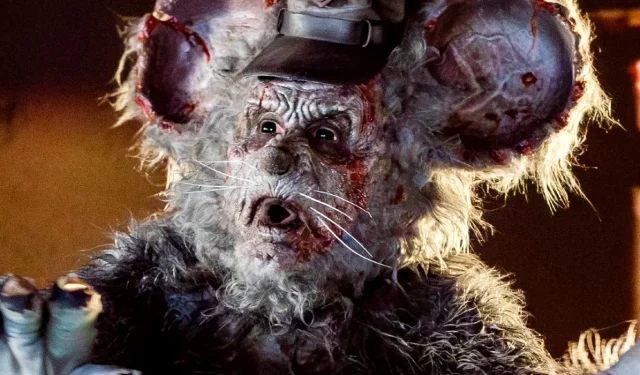Screamboat: A Dive into Public Domainsploitation
The recent release of Screamboat marks yet another foray into the intriguing genre of “public domainsploitation,”which has captivated many producers looking for an efficient way to exploit well-known intellectual properties. The premise is simple: movies inspired by iconic public domain works are often low-cost to produce but promise significant returns, even if they don’t perform well at the box office. This trend is exemplified by recent titles like Winnie-the-Pooh: Blood and Honey, The Mouse Trap, and Peter Pan’s Neverland Nightmare.
Screamboat: A Bold Horror Interpretation
Screamboat stands out as the second horror film based on the classic Steamboat Willie within the past eight months. It reimagines the beloved Disney animated short that introduced Mickey Mouse, now in the public domain. The plot centers around Willie (portrayed by David Howard Thornton, known for his role as Art the Clown), a spurned and vengeful mouse released from captivity aboard the Staten Island Ferry. As chaos ensues, he embarks on a murderous spree, targeting unsuspecting passengers while the deckhand Pete (Jesse Posey) and bartender Selena (Allison Pittel) scramble to stop him.
Production Value That Impresses
The Setting, Kills, and Characterization
Entering Screamboat with a cautious mindset, my skepticism about public domain horror films—often seen as cash grabs—was challenged. The film surprised me with its substantial production value, elevating it beyond the usual offerings in the genre.
Although the cinematography skews toward a dark and murky aesthetic, which plagues many contemporary films, the choice to film on an actual decommissioned Staten Island Ferry (owned by Colin Jost and Pete Davidson) adds an impressive layer of authenticity. The special effects showcase a commendable effort, steering clear from the minimalistic approach taken by many low-budget horror projects.
Willie’s assortment of inventive kills ranges from straightforward shock tactics to a grotesquely detailed decapitation, catering to fans of gruesome horror. Though these depictions may unsettle the faint-hearted, slasher enthusiasts are sure to find satisfaction in the film’s gory delights.
Areas in Need of Improvement
Performances and Comedic Elements
Despite its above-average production quality, Screamboat does not escape the pitfalls common to low-budget horror. The acting varies significantly, with standout performances being few and far between. Jesse Posey’s brother, Tyler Posey, delivers a notably lackluster portrayal as a radio operator, primarily appearing seated and disengaged.
Humor within the film also largely misses the mark. Many comedic bits fall flat due to bland delivery and poor timing. The script relies heavily on references to other Disney properties without offering a clever twist or context, reducing potentially humorous moments to mere name-dropping rather than genuine comedy.
The horror elements often feel underdeveloped, culminating in a painfully drawn-out third act. Here, the film struggles to deliver a coherent climax, leaning into a more serious tone that reveals its horror aspects as lackluster. While the film contains a few appropriately creepy moments, they are few and far between.
Additionally, the theme of Willie whistling—which attempts to tie back to the original short—could have been more impactful had it not included random selections from public domain songs. The juxtaposition of various tunes, including “Take Me Out to the Ball Game,”detracts from the film’s ambience instead of enhancing it.
Flaws Offset by Unique Elements
Thornton’s Performance Shines
Fortunately, many of Screamboat‘s shortcomings are balanced by the film’s strengths. David Howard Thornton’s performance is a standout, seamlessly blending humor and horror through inventive physicality. Drawing on his experience as Art the Clown, Thornton breathes life into a character that moves with a cartoon-like sensibility, an approach that feels refreshingly unique in horror cinema.
The film excels when it leans into its cartoonish nature, reminiscent more of Looney Tunes than traditional Disney fare. This shift in style not only captures audience attention but also provides laughs where earlier attempts floundered. The moments where characters confront Willie with exaggerated objects like giant hammers showcase a delightful element of charm that invigorates the film.
While Screamboat may not reach the heights of cinematic excellence, those with an interest in public domain horror have the potential for an entertaining experience here—far better than many alternatives.


